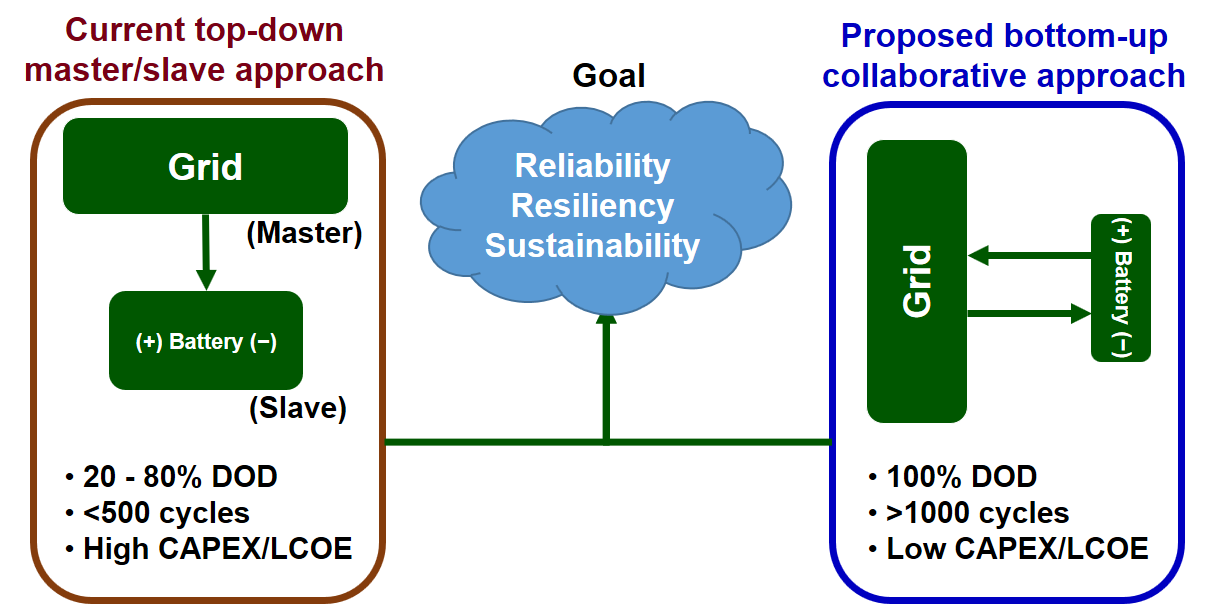Five Questions for Technical Editor Venkat Subramanian
Source: https://www.electrochem.org/redcat-blog/five-questions-technical-editor-venkat-subramanian/
Venkat Subramanian is the Washington Research Foundation Innovation Professor of Chemical Engineering and Clean Energy at the University of Washington. His research efforts focus on computational models to bridge next-generation energy materials to battery management systems. Subramanian has recently been named a new technical editor of the Journal of The Electrochemical Society, concentrating in the electrochemical engineering Topical Interest Area.
What do you hope to accomplish in your role as technical editor?
I am humbled and honored to be a Journal of The Electrochemical Society technical editor and I hope to help improve the impact factor and reach of our journal without losing the rigor we are known for. In particular, the electrochemical engineering topical interest area serves a critical role of taking fundamental electrochemistry to industrial applications. My current aim is to promote both traditional and new industrial applications of electrochemistry across different scales.
What are some of the biggest barriers for authors and for readers in the current publishing model?
Once I had a proposal rejected in my early academic career wherein the reviewer criticized me for not being aware of a recent article. I called the program officer to convey my unfortunate situation of not having access to the specified journal at my institution. While there are interlibrary loans or other such mechanisms, they are not optimal for making progress in research. Research requires instantaneous and immediate access. If you don’t have it, you lose out to your competitors who have such access. Note that every proposal is (and should be) reviewed on its merit and not resources available at a particular institution. Open access is critical for researchers and scientists.
What is the role of the Journal Impact Factor in scientific publishing?
Whether we like it or not, perception matters. Many academic departments have become highly interdisciplinary. Impact factor plays a big role in tenure and promotion decisions and there may be only one faculty member working in the field of electrochemistry. While I personally don’t read or benefit much from journals with high impact factor*, I will strive hard to promote and improve the impact factor of the Journal of The Electrochemical Society and the perception about ECS journals in the scientific community.
What sets the Journal of The Electrochemical Society apart from others like it in the field?
ECS and the Journal of The Electrochemical Society are inclusive and open to accepting folks and researchers from various fields. ECS is friendly towards students and I very much appreciate the fact that ECS has not increased student membership fees and student registration fees drastically.
To give an example, a classic paper on battery modeling as applied for lithium-ion batteries was published in the Journal of The Electrochemical Society in 1993 by Professor John Newman’s group. While there are hundreds of follow-on papers (many published in very high impact factor journals), even as of today, this is the standard model and improvements to these models have been minimal in my humble opinion.
What role do you think electrochemistry has in solving some of society’s most pressing issues?
This is an opportune time to consolidate and enhance the status and role of electrochemistry and electrochemical engineering in chemical and other engineering, chemistry, and material science curricula and departments across the country.
In recent years, energy research has had a resurgence of interest due to concerns about humanity’s environmental footprint, due to issues such as the large-scale production of carbon dioxide and concerns about security and rapid global development. Technological innovations will be essential in addressing this global challenge. For fossil fuel systems, the emphasis has been on carbon dioxide mitigation, and control of fine particle and other pollutant emissions. The development of next-generation biofuels from plant-based sources will require a systems approach to account for all of the associated environmental, human, and economic costs.
Advances in materials to accelerate the development and implementation of cost effective solar-based technologies and energy-storage technologies will be essential. The training of a future workforce of broadly educated engineers and scientists, with strong technical skills will be essential. In this important area of research, electrochemists and electrochemical engineers are needed to play an active role in addressing these challenges.
*Subramanain’s current research involves mathematical formulation, simulation, and optimization. Most math oriented publications are typically not published in high-impact journals.
